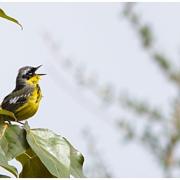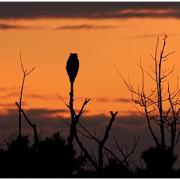
Crossing The Halfway Point
July 2020 marks the halfway point through our five year survey period for the Maine Bird Atlas! In this blog post well celebrate a few of the milestones so far, and highlight the priorities for the future. Here are the numbers as of early July 2020:
2020 Season Kickoff Meeting goes online!
As COVID-19 continues to affect our daily lives, the Maine Bird Atlas is committed to protecting the health and wellbeing of our staff, volunteers, and community members. We believe that feeling connected and involved in the community and empowered to be out in nature and making a difference (while still following social distancing practices) is important for getting through these difficult times.

Atlasing in March
Great Horned Owls start nesting in midwinter so any acceptable codes you detect should be reported. Keep an ear open at night for their Whos awake? Me too songs that are often duetted between pairs. A careful ear will even be able to detect differences in the females higher pitched vocalizations compared to the males lower, deeper hoots.
Sponsor a Species
[caption id="attachment_772" align="aligncenter" width="640"] American Oystercatcher Haematopus palliatus Doug Hitchcox[/caption] A great and fun way to support the Maine Bird Atlas project is to Sponsor a Species. Each of Maines 224 breeding bird species have been divided into sponsorship levels ranging from $30-$2,000 and are available to sponsor for each year of the project.
What's the deal with Chukars in Maine?
By Doug Hitchcox Depending on where you live, you may have the fortune of encountering a medium-sized game bird called Chukar. Youll recognize this bird from their inclusion in many North American field guides, though they are not a native species. Chukars, pronounced chuh-kahr, are an introduced species, originating from mountains of middle Eurasia, now common around the western United States Great Basin north into western Canada.
Black-capped Chronicle, Issue 1: Welcome to the Maine Bird Atlas
Are you interested in learning more about the Maine Bird Atlas project and how you can be involved?
What is the Maine Bird Atlas?
Bird Atlases have been conducted worldwide with the aim of mapping the distribution, and often abundance, of species over a large geographic area and for a fixed amount of time. They follow a standardized methodology and are intended to be repeated at 20-year intervals. In North America, many states and provinces conducted first generation breeding bird atlases that collected comprehensive distribution information on breeding birds in their defined region.
Keep In Touch!
Enter your email or mobile number to receive the latest news from MDIFW.